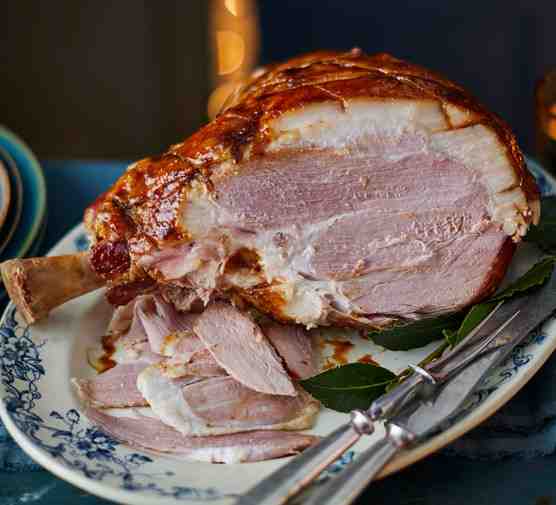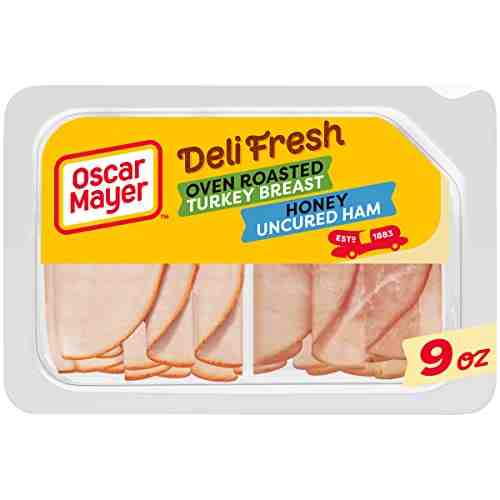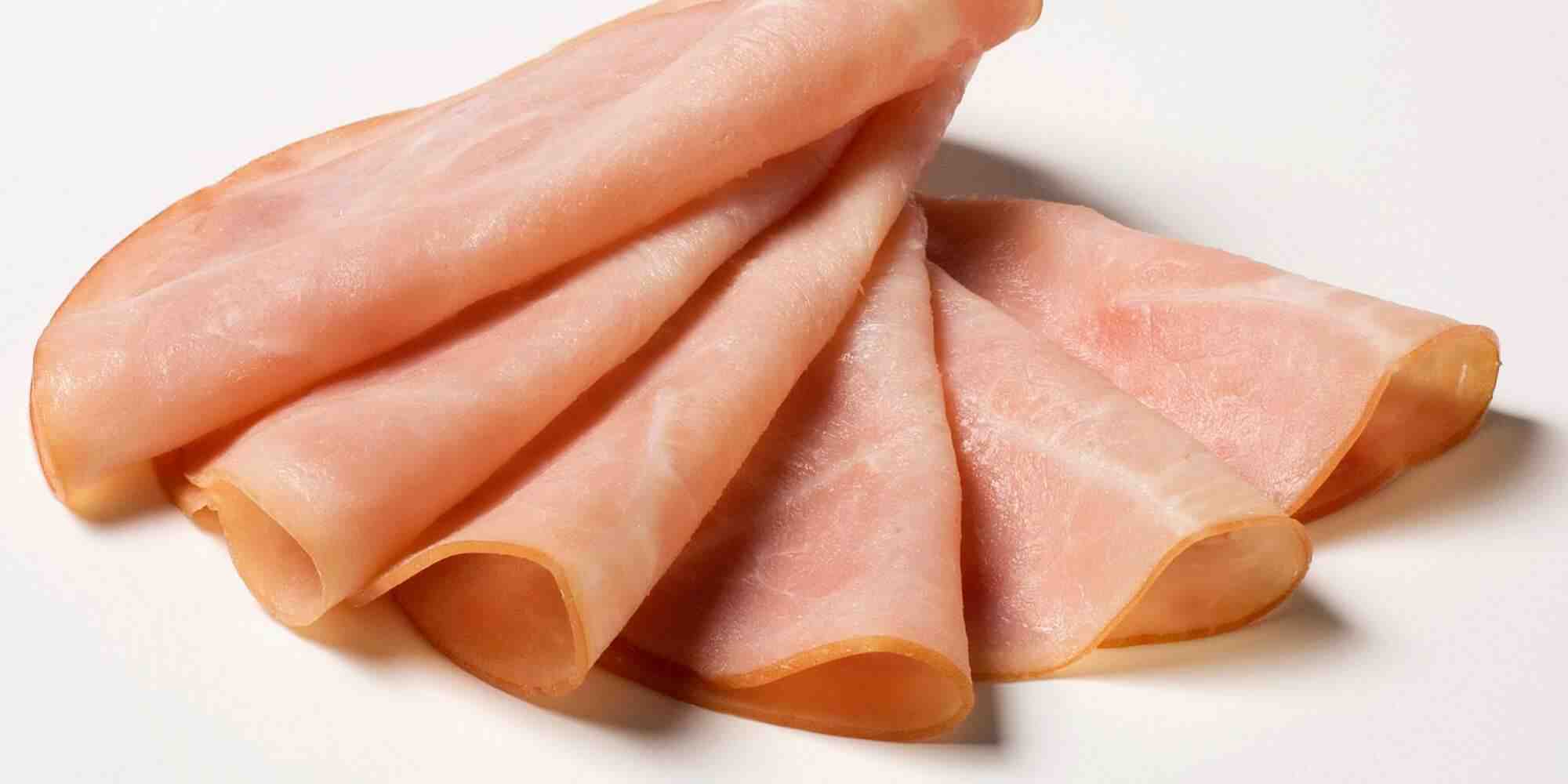Is turkey or ham saltier?

The average sodium content of ham, 937 milligrams, was found to be 5 percent higher than sliced turkey, 888mg. 759Store’s Ham Slices top the list with 1,320mg sodium per 100 grams. Read also : Is turkey healthy meat?. Adults who consume four servings of Sliced Ham a day will exceed the WHO recommended daily limit of 2,000 mg.
Do they still make turkey ham?

It is now produced by other companies as well, including Oscar Mayer, Butterball, and Cargill. Read also : What animal is turkey ham?. The official description of the deli product on the JENNIE-O company website reads: JENNIE-O® Turkey Ham is the ideal choice for taste and versatility.
Is turkey ham better than ham? Turkey meat is fresh meat, rich in vitamins, protein, phosphorus, copper, and magnesium. It is also higher in fat and cholesterol. In comparison, ham is richer in zinc, potassium, and iron.
What is the difference between turkey breast and turkey ham?
Compared to similar sections of skinless turkey breast, turkey breast is significantly leaner than sliced ham. If you want to enjoy both, while also keeping your portions small, then consider having a half portion of turkey and a piece of ham to satisfy your cravings.
Does turkey ham taste like ham?
Ham by any other name may taste sweet, but the recent introduction of the “turkey ham†–which looks and tastes just like the real thing but is made from turkey— has drawn protests from these countries. beef and pork producers.
Is a turkey ham pork?
Turkey ham is a ready-to-eat meat made from cooked or cured turkey, water and other ingredients such as binders. Turkish ham products do not contain pork products. Several companies in the United States produce turkey ham and market it under various brands.
Is turkey ham real ham?
Turkey ham is produced from turkey meats such as cured turkey thighs and other meats from animals, which can be deboned by machine. Contrary to the product name, turkey ham products do not contain ham or pork products.
Is turkey ham the same as turkey bacon?
Turkey ham is leaner than traditional meat. However, it still contains high levels of sodium and saturated fat. So, if you’re looking to cut sodium, you might consider turkey ham. It is significantly lower in calories and saturated fat than traditional bacon.
What is turkey ham?
Ingredients: Turkey Thigh Meat, Water, Dextrose, contains 2% or less Smoke Flavor, Salt, Sodium Phosphate, Sodium Diacetate, Sodium Erythorbate, Sodium Nitrite, Potassium, and Sodium Lactate.
Is turkey bacon ham?
It can be preserved or not, smoked, minced, and shaped into pieces that resemble traditional pork. Turkey meat is cooked by frying. Cured turkey bacon made from dark meat can be 90% fat-free, and tastes more like ham, than bacon.
What is difference between turkey ham and ham?

Ham is cured pork leg. Fresh ham is uncured pork leg. Fresh ham will include the term “fresh” as part of the product name and is an indication that the product is not preserved. “Turkish” ham is a ready-to-eat product made from cured turkey thigh meat.
Does turkey ham taste like ham? Ham by any other name may taste sweet, but the recent introduction of the “turkey ham†–which looks and tastes just like the real thing but is made from turkey— has drawn protests from these countries. beef and pork producers.
What is turkey ham?
Turkey ham is a ready-to-eat meat made from cooked or cured turkey, water and other ingredients such as binders. Turkish ham products do not contain pork products. Several companies in the United States produce turkey ham and market it under various brands.
What is the difference between turkey breast and turkey ham?
Compared to similar sections of skinless turkey breast, turkey breast is significantly leaner than sliced ham. If you want to enjoy both, while also keeping your portions small, then consider having a half portion of turkey and a piece of ham to satisfy your cravings.
What is turkey ham made of?
“Turkish” ham is a ready-to-eat product made from cured turkey thigh meat. The term “turkey ham” is always followed by the statement “cured turkey thigh.” For more information, see Ham and Food Safety.
Is turkey ham the same as ham?
Production. Turkey ham is produced from turkey meats such as cured turkey thighs and other meats from animals, which can be deboned by machine. Contrary to the product name, turkey ham products do not contain ham or pork products.
Is turkey ham considered ham?
Turkey ham is produced from turkey meats such as cured turkey thighs and other meats from animals, which can be deboned by machine. Contrary to the product name, turkey ham products do not contain ham or pork products.
Is there any ham that is not processed?

So, what is uncured ham? Simply put, uncured ham is ham that has undergone a much more natural curing process. The main difference between uncured and cured ham is the use of synthetically sourced nitrates, which can turn into carcinogenic chemicals.
Is turkey better than ham?

Although higher in fat and cholesterol than ham, with about twice the cholesterol, fresh turkey is richer in vitamins, protein, phosphorus, copper and magnesium. Ham provides more zinc, potassium and iron, but is usually high in sodium.
Is deli turkey healthier than ham? Of all the meats, turkey breast is the healthiest because of its lean and low-fat characteristics.
Is turkey healthier than ham?
Turkey meat is fresh meat, rich in vitamins, protein, phosphorus, copper, and magnesium. It is also higher in fat and cholesterol. In comparison, ham is richer in zinc, potassium, and iron. Ham has a high sodium content.
Is turkey the healthiest meat?
Healthiest to least healthy White meat has slightly less saturated fat than dark. Turkey is fairly comparable to chicken in nutrition, but the dark and white meat is slightly leaner. White meat has slightly less saturated fat than dark meat; skinless, boneless breasts are the slimmest.
Is turkey or ham better for weight loss?
These three options are very similar in energy density. Light meat turkey is still your best bet, as it contains 1.5 calories per gram, followed by ham at 1.6 calories per gram and dark turkey at 1.7 calories per gram.
Is turkey the healthiest meat?
Healthiest to least healthy White meat has slightly less saturated fat than dark. Turkey is fairly comparable to chicken in nutrition, but the dark and white meat is slightly leaner. White meat has slightly less saturated fat than dark meat; skinless, boneless breasts are the slimmest.
What meat is healthier than turkey?
Beef has more iron, zinc, and vitamin B12, which are nutrients that promote healthy blood, immunity, and nervous system health, than turkey. On the other hand, turkey contains more of the B vitamins needed for energy metabolism (7, 8, 9, 10).
Is turkey a healthy meat?
Turkey is a popular meat that offers high-quality protein, B vitamins, selenium, zinc, and phosphorus. It can support various aspects of health, including muscle growth and maintenance, due to its rich supply of nutrients.
Why should you eat ham instead of turkey?
It is an impressionable meat and easily absorbs the flavor of any sauce it is coated with. “Ham is superior. Itâ€s less dry, has a better texture, and if seasoned properly it tastes better.†“I rarely eat good turkey, but I do have a lot of great ham.â€
What meat is the most popular alternative to turkey?
An exciting new statistic comes in a new survey of 2,000 Americans on all things Thanksgiving, which also lists ham (60 percent), chicken (41 percent) and roast beef (37 percent) as the most popular alternatives to turkey.
What are some reasons that ham is better than turkey?
Turkey meat, compared to ham, is richer in phosphorus, copper and magnesium. On the other hand, ham is richer in zinc, potassium and iron. It is important to take into account the high amount of sodium in ham. Ham contains 1200mg sodium which is more than 50% of the recommended daily value.
Sources :
